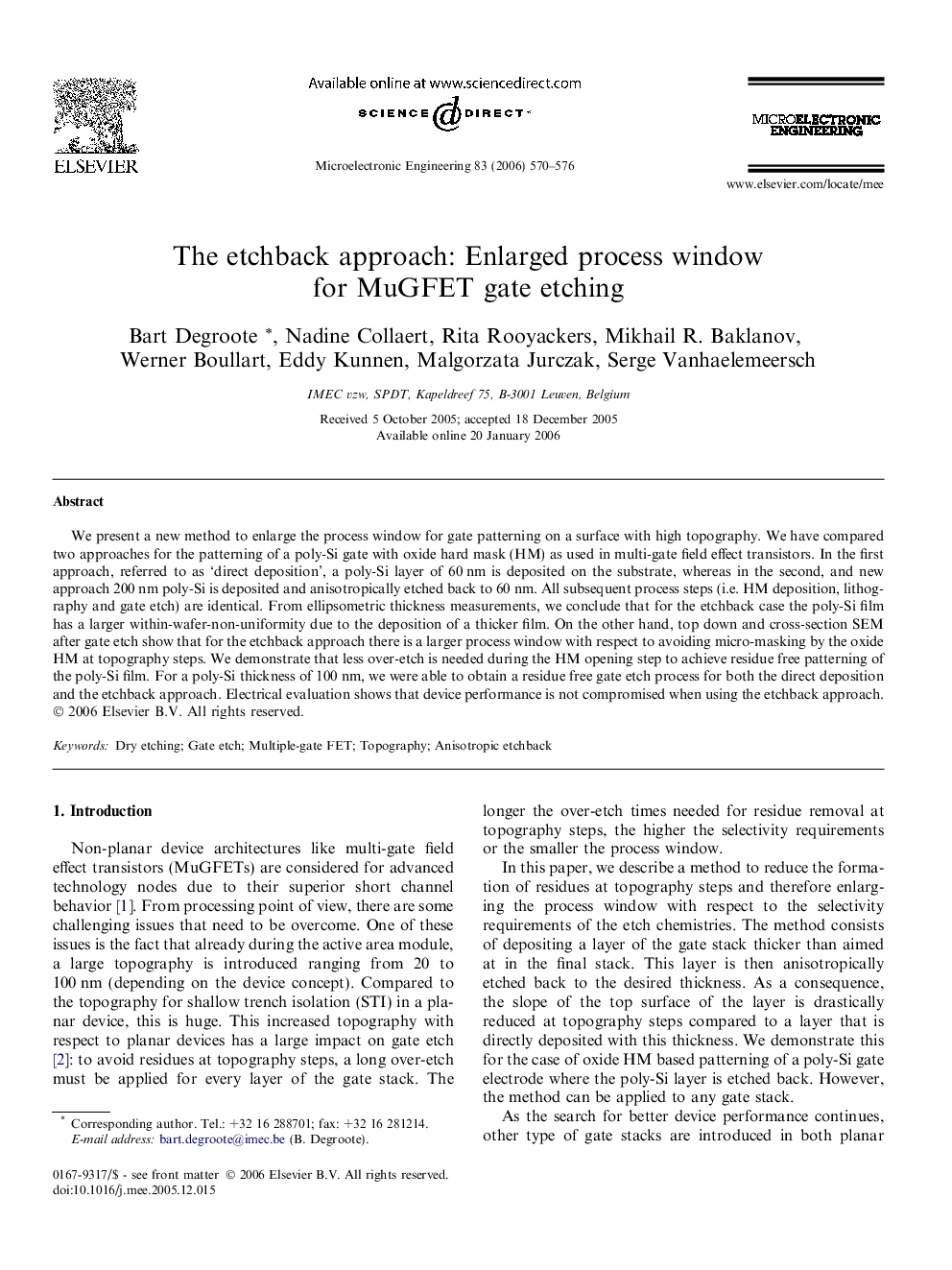| Article ID | Journal | Published Year | Pages | File Type |
|---|---|---|---|---|
| 545286 | Microelectronic Engineering | 2006 | 7 Pages |
Abstract
We present a new method to enlarge the process window for gate patterning on a surface with high topography. We have compared two approaches for the patterning of a poly-Si gate with oxide hard mask (HM) as used in multi-gate field effect transistors. In the first approach, referred to as 'direct deposition', a poly-Si layer of 60Â nm is deposited on the substrate, whereas in the second, and new approach 200Â nm poly-Si is deposited and anisotropically etched back to 60Â nm. All subsequent process steps (i.e. HM deposition, lithography and gate etch) are identical. From ellipsometric thickness measurements, we conclude that for the etchback case the poly-Si film has a larger within-wafer-non-uniformity due to the deposition of a thicker film. On the other hand, top down and cross-section SEM after gate etch show that for the etchback approach there is a larger process window with respect to avoiding micro-masking by the oxide HM at topography steps. We demonstrate that less over-etch is needed during the HM opening step to achieve residue free patterning of the poly-Si film. For a poly-Si thickness of 100Â nm, we were able to obtain a residue free gate etch process for both the direct deposition and the etchback approach. Electrical evaluation shows that device performance is not compromised when using the etchback approach.
Keywords
Related Topics
Physical Sciences and Engineering
Computer Science
Hardware and Architecture
Authors
Bart Degroote, Nadine Collaert, Rita Rooyackers, Mikhail R. Baklanov, Werner Boullart, Eddy Kunnen, Malgorzata Jurczak, Serge Vanhaelemeersch,
